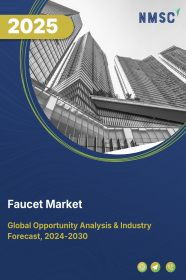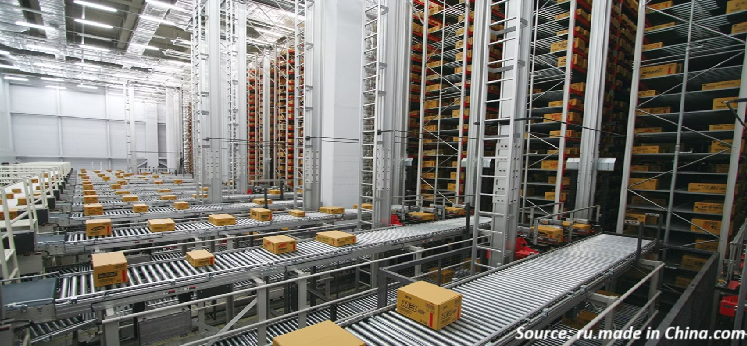
Japan Additive Manufacturing Market by Type (Desktop 3D Printer and Industrial 3D Printer), by Technology (Stereolithography, Fused Deposition Modeling, Selective Laser Sintering, Direct Metal Laser Sintering, Polyjet Printing, Inkjet Printing, Electron Beam Melting, Laser Metal Deposition, Digital Light Processing, Laminated Object Manufacturing, and Other Technology), by Component (Hardware, Software, and Services), and Others – Opportunity Analysis and Industry Forecast, 2024–2030
Industry: Construction & Manufacturing | Publish Date: 01-Mar-2025 | No of Pages: 172 | No. of Tables: 132 | No. of Figures: 77 | Format: PDF | Report Code : CM663
US Tariff Impact on Japan Additive Manufacturing Market
Trump Tariffs Are Reshaping Global Business
Japan Additive Manufacturing Market Overview
Japan Additive Manufacturing Market size was valued at USD 994.7 million in 2023, and is predicted to reach USD 3602.4 million by 2030, at a CAGR of 18.6% from 2024 to 2030. In terms of volume, the market size was 39 thousand units in 2023, and is projected to reach 164 thousand units by 2030, with a CAGR of 20.5% from 2024 to 2030.
The additive manufacturing (AM) market, also referred to as additive layer manufacturing (ALM) or three-dimensional (3D) printing, represents a global industry dedicated to developing, manufacturing, and distributing technologies and materials used to fabricate three-dimensional objects layer by layer from digital models.
Serving a wide range of sectors including aerospace, automotive, healthcare, and consumer goods, this market offers advanced solutions for prototyping, production, and customized manufacturing.
AM is highly valued for its capacity to create intricate and personalized components while minimizing material waste, resulting in substantial cost savings and environmental benefits. A distinguishing characteristic of this market is its diverse array of printing technologies such as stereolithography (SLA), selective laser sintering (SLS), and fused deposition modeling (FDM), each tailored to meet specific industry requirements and applications. Additionally, AM's capability for rapid prototyping accelerates product development cycles, empowering businesses to innovate and bring products to market more quickly compared to traditional manufacturing methods.
Surge in Automotive Production Propels the Growth of the Market
The escalating level of car production in Japan is propelling the need for customization and efficiency in automotive production, thereby accelerating the Japan additive manufacturing market growth. Automotive companies are increasingly turning to additive manufacturing (AM) for prototyping, tooling, and even end-part production.
In 2023, car sales in Japan rose by 12.4%, surging from 3.46 million units in 2022 to 3.89 million units. This growth in automotive sales necessitates the adoption of 3D printing for the cost-effective production of complex geometries and lightweight car parts, which are critical factors in the automotive industry of the country.
Rising Investment in Digital Infrastructure by Key Players Boosts the Market Growth
The increasing investment in digital infrastructure in Japan is driving a surge in demand for advanced manufacturing solutions such as AM. As Japan prioritizes the development of digital networks and smart manufacturing technologies, industries are embracing AM as a means to enhance production agility, reduce time-to-market, and optimize supply chains.
According to a report published by the International Trade Administration (ITA) in 2022, Japanese manufacturing companies invested around USD 890 million in digital infrastructure, with this figure expected to grow to USD 4.1 billion by 2030.
The integration of digital infrastructure allows manufacturers in Japan to rapidly prototype, customize, and produce complex components on demand, fueling the market growth of AM in the country.
High Upfront Investment Restrains Market Growth
The substantial upfront investment needed for equipment, materials, and training presents a significant obstacle to Japan additive manufacturing market expansion. This financial commitment poses a notable challenge for businesses, particularly smaller ones, limiting their capacity to enter or expand operations within the market.
Additionally, ongoing expenses related to materials and training further increase the overall financial burden. Consequently, many businesses are hesitant to adopt AM technology due to these initial financial challenges, thereby impeding the growth potential of the additive manufacturing market.
Integration of Artificial Intelligence (AI) in Additive Manufacturing Presents Lucrative Opportunity for Market Expansion
Integrating artificial intelligence (AI) into additive manufacturing (AM) is anticipated to expand the 3D printing by refining production processes, enhancing product design capabilities, and facilitating the creation of intricate and personalized objects.
AI integration enables businesses to analyze extensive datasets gathered during printing, such as material properties, printing parameters, and environmental conditions. This analysis helps identify patterns, optimize settings, and predict potential defects, thereby improving printing precision and reducing material waste.
Competitive Landscape
The key prominent players operating in Japan additive manufacturing industry include Protolabs, Solize 3D, JAMPT Corporation, Kabuku, Dai Nippon Printing, Yokoito, Shibuya Kogyo, DMG Mori, Isuzu Glass, Andor, NTT Data XAM Technologies Corporation, TUV Rheinland, Ricoh Global, TCT Japan, MARUBENI INFORMATION SYSTEMS CO.,LTD., and others.
Japan Additive Manufacturing Market Key Segments
By Component
-
Hardware
-
Software
-
Design Software
-
Inspection Software
-
Printer Software
-
Scanning Software
-
-
Services
By Type
-
Desktop 3D Printer
-
Industrial 3D Printer
By Technology
-
Stereolithography
-
Fused Deposition Modeling
-
Selective Laser Sintering
-
Direct Metal Laser Sintering
-
Polyjet Printing
-
Inkjet Printing
-
Electron Beam Melting
-
Laser Metal Deposition
-
Digital Light Processing
-
Laminated Object Manufacturing
-
Other Technology
By Application
-
Prototyping
-
Tooling
-
Functional Parts
By End User
-
Desktop Additive Manufacturing
-
Educational Purpose
-
Fashion & Jewellery
-
Objects
-
Dental
-
Food
-
Other Desktop Additive Manufacturing
-
-
Industrial Additive Manufacturing
-
Automotive
-
Aerospace & Defense
-
Healthcare
-
Consumer Electronics
-
Power & Energy
-
Other Industrial Additive Manufacturing
-
Key Players
-
Protolabs
-
Solize 3D
-
JAMPT Corporation
-
Kabuku
-
Dai Nippon Printing
-
Yokoito
-
Shibuya Kogyo
-
DMG Mori
-
Isuzu Glass
-
Andor
-
NTT Data XAM Technologies Corporation
-
TUV Rheinland
-
Ricoh Global
-
TCT Japan
-
MARUBENI INFORMATION SYSTEMS CO.,LTD.
REPORT SCOPE AND SEGMENTATION:
|
Parameters |
Details |
|
Market Size Value in 2023 |
USD 994.7 million |
|
Revenue Forecast in 2030 |
USD 3602.4 million |
|
Growth Rate |
CAGR 18.6% from 2024 to 2030 |
|
Market Volume in 2023 |
39 thousand units |
|
Market Forecast in 2030 |
164 thousand units |
|
Volume Growth Rate |
CAGR of 20.5% from 2024 to 2030 |
|
Analysis Period |
2023–2030 |
|
Base Year Considered |
2023 |
|
Forecast Period |
2024–2030 |
|
Market Size Estimation |
Million (USD) |
|
Growth Factors |
|
|
Companies Profiled |
15 |
|
Market Share |
Available for 10 companies |
|
Customization Scope |
Free customization (equivalent up to 80 working hours of analysts) after purchase. Addition or alteration to country, regional, and segment scope. |
|
Pricing and Purchase Options |
Avail customized purchase options to meet your exact research needs. |

















 Speak to Our Analyst
Speak to Our Analyst





















